Opinion
Reducing Trade Deficit

By DR. C. S. WEERARATNA
A trade deficit typically occurs when a country does not produce enough goods for its citizens. When production cannot meet demand as in Sri Lanka, there is a need to import thereby widening the trade deficit. A persistent trade deficit is detrimental to a country’s economy because it is financed with debt. The trade deficit in Sri Lanka had been persistent over a long period of time (Table 1)
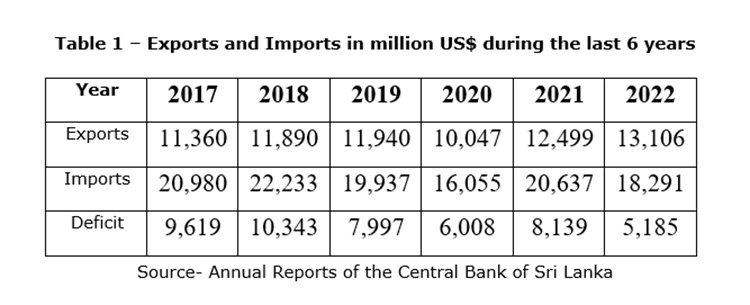 Persistent Trade Deficit tends to have a negative impact on employment, growth, and value of the currency. If we are to reduce the trade deficit it is essential that exports are increased and imports are reduced as much as possible.
Persistent Trade Deficit tends to have a negative impact on employment, growth, and value of the currency. If we are to reduce the trade deficit it is essential that exports are increased and imports are reduced as much as possible.
Increase export earnings
The dire need to increase our export earnings to meet the severe financial crisis we are facing today has been emphasised by many. As indicated in Table 1, exports during the last six years (this is the case even in earlier years) have not increased by any substantial amount in spite of an Export Development Board and numerous other related authorities. Increasing exports is of paramount importance to improve our economy. It is because of the importance of increasing exports that the government brought a National Export Strategy. But what are we going to export?
Plantation Sector
Our major exports are plantation crops, tea, rubber and coconut. Around 800,000 ha are cultivated with plantation crops. However, as indicated in Table 2, the production of these major export crops does not show any substantial increase during the last five years.
As shown in Table 2, tea production has been fluctuating around 275 million kg per year during the last few years. Annual rubber production shows a tendency to decrease. Coconut production has fluctuated around 300 million nuts per year. This appalling situation in the plantation sector can be attributed to many factors, but the Ministry of Plantation Industries and the relevant authorities appear to have not taken effective strategies to remedy this situation. If the productivity of this sector is raised, it would be possible to increase foreign exchange earnings thereby reducing the trade deficit. It is necessary that the relevant authorities take appropriate action to increase the production of the plantation crops.
A large number of crops other than tea, rubber and coconut cultivated in Sri Lanka have a high potential as export crops. There are 24 agro-ecological zones, each characterised by specific climate and soil. This makes it possible to cultivate different types of crops. Among these are spice crops such as cinnamon, pepper and nutmeg, tuberous crops, horticultural and floricultural crops, medicinal herbs etc. which have a considerable export potential. In 2020, spice crops earned around US $ 400 million. There are many organizations such as the Ministries of Agriculture, Industry and Commerce, Export Development Board, Industrial Development Board etc. but, there appears to be no proper plan to increase the production of these crops.
Out of the 6.5 million hectares of land, around 2.0 million hectares are in the Wet Zone. About 75% of it is cultivated and most of this land is of low-productivity mainly due to soil degradation. In the Dry Zone, out of the 4.5 million hectares only about 2 million hectares are in productive use. Thus, there is a large extent of potentially cultivable land in the Dry Zone. Most of the soils in the Dry Zone are relatively more fertile than those in the Wet Zone. Non-availability of adequate rainfall during the Yala season is one of the limiting factors of crop production in the Dry Zone. However, better water management practices would reduce this limitation. Also, various major irrigation projects such as Mahaveli, Kirindi Oya, Muthukandiya and Inginimitiya provide irrigation to about 200,000 hectares in the Dry Zone. The recently inaugurated Moraghakanda project is expected to provide irrigation water to nearly 80,000 ha. The numerous minor irrigation projects too would increase the irrigable area in the Dry Zone. Thus, there is a considerable potential to increase the level of crop production in Sri Lanka, export of which would enable to increase exports and reduce trade deficit.
Agro-Industries:
Promoting industries based on agriculture (agro-industries) will have a considerable positive impact on increasing export earnings thereby reducing trade deficit. There is an urgent need to develop agro-industries in Sri Lanka, which will have a tremendous positive impact on employment and rural poverty. A large number of crops cultivated in Sri Lanka, including rice, have a considerable potential in various agro-industries. However, only rubber, coconut and a few fruit crops are used in industries. Crops such as cassava, horticultural and floricultural crops, medicinal herbs, cane, bamboo, sunflower, castor, ayurvedic herbs such as katuwelbatu , etc. have a considerable potential as export crops, but are not cultivated to any appreciable extent for want of better and improved varieties, technological know-how, relevant market information etc. Development of agro-industries will also increase export income and will have a tremendous positive impact on the economy of the country, and also provide employment opportunities among rural people. Private sector can be involved in such projects for which appropriate technical assistance needs to be given by the relevant public organisations. However, there appears to be no proper long-term plan to develop agro-industries, except for some ad-hoc projects. The Ministries of Industries and Agriculture should implement an effective Agro-Industrial Development Programme, in collaboration with the private sector, which undoubtedly would improve export income, employment opportunities and incomes in the rural areas.
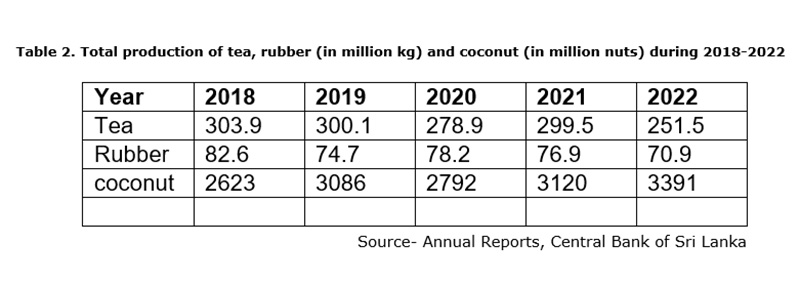
Small and Medium-Term Industries
Products of crop based Small and Medium Enterprises (SMEs), have a high export potential and play a very important role in economic development of Sri Lanka because they have the capacity to achieve rapid economic growth, while generating a considerable extent of employment opportunities. Promotion of SMEs would result in increasing industrial output of the country, leading to more exports. However, not much emphasis appears to have been placed on improving SMEs, except providing loans from banks. A main factor which limits the SME sector is inadequate raw materials.
Increasing cost of Imports
While some talk about strategies to increase exports, there appears to be not much emphasis on reducing crop-based imports, which will have an appreciable impact on reducing trade deficit. Our import costs are likely to increase due to escalation of freight costs as a result of Houthi attacks in the red sea. This will widen our trade deficit.
Most of the food imported such as sugar, milk food, lentils, onion, maize, etc., which involves around US$ 2,000 million annually, can be locally produced, thereby reducing expenditure on food imports. For example, nearly 16% of food imports is spent on importing sugar, most of which can be locally produced. Sugar production in the country has not increased by any appreciable amounts during the present decade in spite of three sugar companies, Pelwatta, Sevanagala and Hingurana and the Sugarcane Research Institute. Kantale sugar factory remains closed over a long period, while a plan to cultivate sugarcane in Bibile remains shelved. There are crops such as coconut, kitul and palmyrah which can be used to manufacture sugar-based substances such as jaggery and treacle, but there appears to be no effective strategy to promote the production of these crops.
With regard to milk production we have around 1 million cattle consisting of mostly indigenous breeds. Their productivity is low (1-3 litres/day) mainly due to the poor nature of the breeds and inadequate low-quality feed supply. As a result, annually we import nearly 300 million US dollars worth of milk and other dairy products. There appears to be no effective plan to increase local milk production by improving the local breeds and supply of cattle feed. The dairy industry has a potential to contribute considerably to Sri Lanka’s economic development. But, instead of implementing an effective viable plan to develop the dairy industry in the country, the government imported around 20,000 cattle from New Zealand and Australia involving USD 73 million. Importing cattle to improve the dairy industry in the country is a futile action, as importing cattle alone is not going to increase milk production in the long run, unless there is an effective programme to upgrade local cattle breeds, promote cultivation of improved pasture grasses which can be grown under coconut and provide better veterinary practices.
Nearly 300 million US dollars worth of rice (a carbohydrate) is imported annually when there are many tuberous crops such as innala, sweet potato, yams which can replace a part of the rice we import thereby reducing expenditure on imports.
Eppawala Apatite (EA), which was discovered a few decades ago still remains partly underutilized. EA can be used to manufacture phosphate fertilisers. But still we grind the rock and use the ground apatite as a P fertiliser, while spending millions to import Single Superphosphate and Triple Super Phosphate, which can be manufactured from EA.
The expenditure on subsidiary crops such as chillies, green gram, ground nut, potato etc, is millions of US dollars. The average per hectare yields and the extent of these crops have not increased by any appreciable amount during the last decade. In fact, chili production has decreased during the last few years. In the recent past, a former Minister of Agricultural Development Chamal Rajapaksa, appointed an Advisory Panel to make proposals to develop the agricultural sector in the country so that there is a quantitative and qualitative increase in crop production at a lower cost with no damage to the environment. During the last few years numerous programmes such as “AMA’, Waga Sangramaya and Govi Sevana” were implemented. All these activities/programmes, appear to have not made any appreciable positive impact on the agricultural sector of the country indicated by increasing expenditure on food.
Science and Technology.
Effective use of Science and Technology (S&T) would tend to reduce imports and increase exports. During the last two decades, effective use of Science and Technology (S&T) enabled most of the South and South East Asian countries to develop substantially. However, in Sri Lanka, in spite of a number of scientific organisations such as the National Science Foundation, National Institute of Fundamental Studies, National Research Council of Sri Lanka, National Science and Technology Commission, which use a considerable amount of scarce financial resources, S&T has been used to a relatively very little extent to decrease imports which will tend to reduce trade deficit thereby improving the economy of the country.
A primary objective of use of S&T in a developing country such as Sri Lanka must be to conduct appropriate studies on the critical issues and advise the authorities on relevant action to be taken. Science and Technology need to be used to utilise locally available resources. Conducting research alone will not lead to economic development, unless the technologies developed by research are commercialised. Organisations such as the Industrial Development Board, the Board of Investments etc. need to coordinate with the relevant scientific organisations to attract investments on commercialisation of proven technologies. Vidatha Centers have been established in many DS Divisions to commercialise S&T. Perhaps the Ministry of Technology and Research may indicate to what extent these Vidatha Centers have been effective in commercialising S&T.
In Sri Lanka, during the last two decades, perhaps a few hundreds of research studies, involving billions of rupees worth of scarce resources, have been conducted. Findings of these research projects were presented at numerous conferences, seminars etc. It is important that we utilise these research findings to find solutions to some of the pressing problems of the country. But there appears to be no effective system to achieve this. Instead, the authorities are concerned in conducting more and more seminars and symposia without any plan to effectively utilise the findings/conclusions.
The authorities concerned should discuss these issues and take appropriate action. There has been rhetoric on economic development during the last few years. It is meaningful and effective actions that are necessary.
Opinion
Thoughts for Unduvap Poya
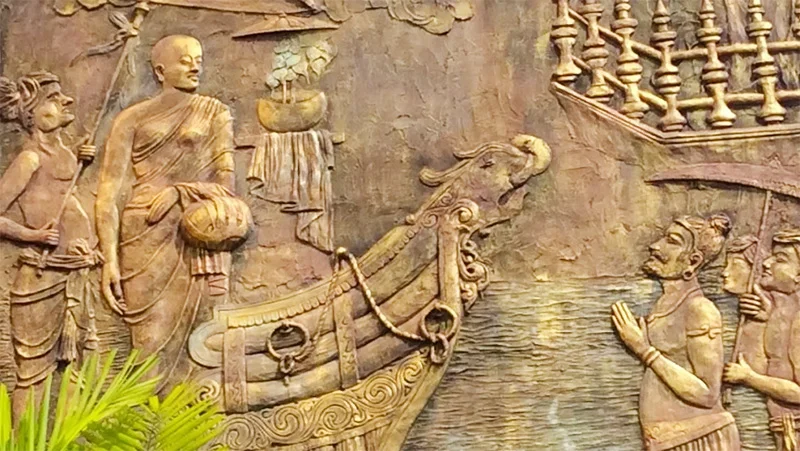
Unduvap Poya, which falls today, has great historical significance for Sri Lanka, as several important events occurred on that day but before looking into these, as the occasion demands, our first thought should be about impermanence. One of the cornerstones of Buddha’s teachings is impermanence and there is no better time to ponder over it than now, as the unfolding events of the unprecedented natural disaster exemplify it. Who would have imagined, even a few days ago, the scenes of total devastation we are witnessing now; vast swathes of the country under floodwaters due to torrential rain, multitudes of earth slips burying alive entire families with their hard-built properties and closing multiple trunk roads bringing the country to a virtual standstill. The best of human kindness is also amply demonstrated as many risk their own lives to help those in distress.
In the struggle of life, we are attached and accumulate many things, wanted and unwanted, including wealth overlooking the fact that all this could disappear in a flash, as happened to an unfortunate few during this calamitous time. Even the survivors, though they are happy that they survived, are left with anxiety, apprehension, and sorrow, all of which is due to attachment. We are attached to things because we fail to realise the importance of impermanence. If we do, we would be less attached and less affected. Realisation of the impermanent nature of everything is the first step towards ultimate detachment.
It was on a day like this that Arahant Bhikkhuni Sanghamitta arrived in Lanka Deepa bringing with her a sapling of the Sri Maha Bodhi tree under which Prince Siddhartha attained Enlightenment. She was sent by her father Emperor Ashoka, at the request of Arahant Mahinda who had arrived earlier and established Buddhism formally under the royal patronage of King Devanampiyatissa. With the very successful establishment of Bhikkhu Sasana, as there was a strong clamour for the establishment of Bhikkhuni Sasana as well, Arahant Mahinda requested his father to send his sister which was agreed to by Emperor Ashoka, though reluctantly as he would be losing two of his children. In fact, both served Lanka Deepa till their death, never returning to the country of their birth. Though Arahant Sanghamitta’s main mission was otherwise, her bringing a sapling of the Bo tree has left an indelible imprint in the annals of our history.
According to chronicles, King Devanampiyatissa planted the Bo sapling in Mahamevnawa Park in Anuradhapura in 288 BCE, which continues to thrive, making it the oldest living human planted tree in the world with a known planting date. It is a treasure that needs to be respected and protected at all costs. However, not so long ago it was nearly destroyed by the idiocy of worshippers who poured milk on the roots. Devotion clouding reality, they overlooked the fact that a tree needs water, not milk!
A monk developed a new practice of Bodhi Puja, which even today attracts droves of devotees and has become a ritual. This would have been the last thing the Buddha wanted! He expressed gratitude by gazing at the tree, which gave him shelter during the most crucial of times, for a week but did not want his followers to go around worshipping similar trees growing all over. Instead of following the path the Buddha laid for us, we seem keen on inventing new rituals to indulge in!
Arahant Sanghamitta achieved her prime objective by establishing the Bhikkhuni Sasana which thrived for nearly 1200 years till it fell into decline with the fall of the Anuradhapura kingdom. Unfortunately, during the Polonnaruwa period that followed the influence of Hinduism over Buddhism increased and some of the Buddhist values like equality of sexes and anti-casteism were lost. Subsequently, even the Bhikkhu Sasana went into decline. Higher ordination for Bhikkhus was re-established in 1753 CE with the visit of Upali Maha Thera from Siam which formed the basis of Siam Maha Nikaya. Upali Maha Thero is also credited with reorganising Kandy Esala Perahera to be the annual Procession of the Temple of Tooth, which was previously centred around the worship of deities, by getting a royal decree: “Henceforth Gods and men are to follow the Buddha”
In 1764 CE, Siyam Nikaya imposed a ‘Govigama and Radala’ exclusivity, disregarding a fundamental tenet of the Buddha, apparently in response to an order from the King! Fortunately, Buddhism was saved from the idiocy of Siyam Nikaya by the formation of Amarapura Nikaya in 1800 CE and Ramanna Nikaya in 1864 CE, higher ordination for both obtained from Burma. None of these Niakya’s showed any interest in the re-establishment of Bhikkhuni Sasana which was left to a band of interested and determined ladies.
My thoughts and admiration, on the day Bhikkhuni Sasana was originally established, go to these pioneers whose determination knew no bounds. They overcame enormous difficulties and obtained higher ordination from South Korea initially. Fortunately, Ven. Inamaluwe Sri Sumangala Thero, Maha Nayaka of Rangiri Dambulla Chapter of Siyam Maha Nikaya started offering higher ordination to Bhikkhunis in 1998 but state recognition became a sore point. When Venerable Welimada Dhammadinna Bhikkhuni was denied official recognition as a Bhikkhuni on her national identity card she filed action, with the support of Ven. Inamaluwe Sri Sumangala Thero. In a landmark majority judgement delivered on 16 June, the Supreme Court ruled that the fundamental rights of Ven. Dhammadinna were breached and also Bhikkhuni Sasana was re-established in Sri Lanka. As this judgement did not receive wide publicity, I wrote a piece titled “Buddhism, Bhikkhus and Bhikkhunis” (The Island, 10 July 2025) and my wish for this Unduvap Poya is what I stated therein:
“The landmark legal battle won by Bhikkhunis is a victory for common sense more than anything else. I hope it will help Bhikkhuni Sasana flourish in Sri Lanka. The number of devotees inviting Bhikkhunis to religious functions is increasing. May Bhikkhunis receive the recognition they richly deserve.” May there be a rapid return to normalcy from the current tragic situation.”
by Dr Upul Wijayawardhana
Opinion
Royal Over Eighties
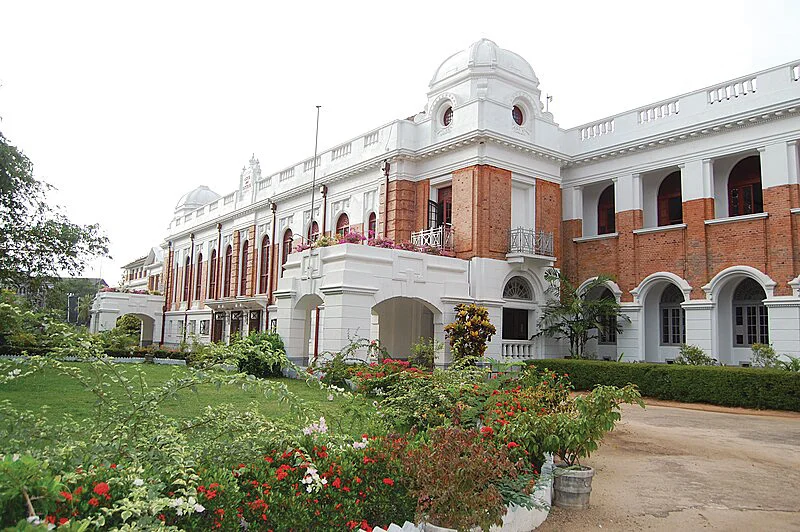
The gathering was actually of ‘Over Seventies’ but those of my generation present were mostly of the late eighties.
Even of them I shall mention only those whom I know at least by name. But, first, to those few of my years and older with whom speech was possible.
First among them, in more sense than one, was Nihal Seneviratne, at ninety-one probably the oldest present. There is no truth to the story that his state of crisp well-being is attributable to the consumption of gul-bunis in his school days. It is traceable rather to a life well lived. His practice of regular walks around the house and along the lane on which he lives may have contributed to his erect posture. As also to the total absence of a walking stick, a helper, or any other form of assistance as he walked into the Janaki hotel where this gathering took place.
Referencing the published accounts of his several decades-long service in Parliament as head of its administration, it would be moot to recall that his close friend and fellow lawyer, J E D Gooneratne, teased him in the following terms: “You will be a bloody clerk all your life”. He did join service as Second Assistant to the Clerk to the House and moved up, but the Clerk became the Secretary General. Regardless of such matters of nomenclature, it could be said that Nihal Seneviratne ran the show.
Others present included Dr. Ranjith de Silva, Surgeon, who was our cricket Captain and, to the best of my knowledge, has the distinction of never engaging in private practice.
The range of Dr. K L (Lochana) Gunaratne’s interests and his accomplishments within each are indeed remarkable. I would think that somebody who’d received his initial training at the AA School of Architecture in London would continue to have architecture as the foundation of his likes /dislikes. Such would also provide a road map to other pursuits whether immediately related to that field or not. That is evident in the leadership roles he has played in the National Academy of Sciences and the Institute of Town Planners among others. As I recall he has also addressed issues related to the Panadura Vadaya.
My memories of D L Seneviratne at school were associated with tennis. As happens, D L had launched his gift for writing over three decades ago with a history of tennis in Sri Lanka (1991). That is a game with which my acquaintance is limited to sending a couple of serves past his ear (not ‘tossing the ball across’ as he asked me to) while Jothilingam, long much missed, waited for his team mates to come for practices. It is a game at which my father spent much time both at the Railway sports club and at our home-town club. (By some kind of chance, I recovered just a week ago the ‘Fred de Saram Challenge Cup’ which, on his winning the Singles for the third time, Koo de Saram came over to the Kandana Club to hand over to him for keeps. They played an exhibition match which father won). D L would know whether or not, as I have heard, in an exhibition match in Colombo, Koo defeated Frank Sedgman, who was on his triumphant return home to Oz after he had won the Wimbledon tournament in London.
I had no idea that D L has written any books till my son brought home the one on the early history of Royal under Marsh and Boake, (both long-bearded young men in their twenties).
It includes a rich assortment of photographs of great value to those who are interested in the history of the Anglican segment of Christian missionary activity here in the context of its contribution to secondary school education. Among them is one of the school as it appeared on moving to Thurstan road from Mutwal. It has been extracted from the History of Royal, 1931, done by students (among whom a relative, Palitha Weeraman, had played a significant role).
As D L shows, (in contra-distinction to the Catholic schools) the CMS had engaged in a largely secular practice. Royal remained so through our time – when one could walk into the examination room and answer questions framed to test one’s knowledge of Christianity, Buddhism, Hinduism and Islam; a knowledge derived mostly from the lectures delivered by an Old Boy at general assembly on Friday plus readings from the Dhammapada, the Bhagavad Gita, the St. John’s version of the Bible or the Koran recited by a student at senior assembly on Tuesday / Thursday.
D L’s history of Royal College had followed in 2006.
His writing is so rich in detail, so precise in formulation, that I would consider this brief note a simple prompt towards a publisher bringing out new editions at different levels of cost.
It was also a pleasure to meet Senaka Amarasinghe, as yet flaunting his Emperor profile, and among the principal organisers of this event.
The encounter with I S de Silva, distinguished attorney, who was on Galle road close to Janaki lane, where I lived then was indeed welcome. As was that with Upali Mendis, who carried out cataract surgery on my mother oh so long ago when he was head of the Eye Hospital. His older brother, L P, was probably the most gifted student in chemistry in our time.
Most serendipitous perhaps was meeting a son of one of our most popular teachers from the 1950s, – Connor Rajaratnam. His cons were a caution.
by Gamini Seneviratne
Opinion
“Regulatory Impact Assessment – Not a bureaucratic formality but essentially an advocacy tool for smarter governance”: A response
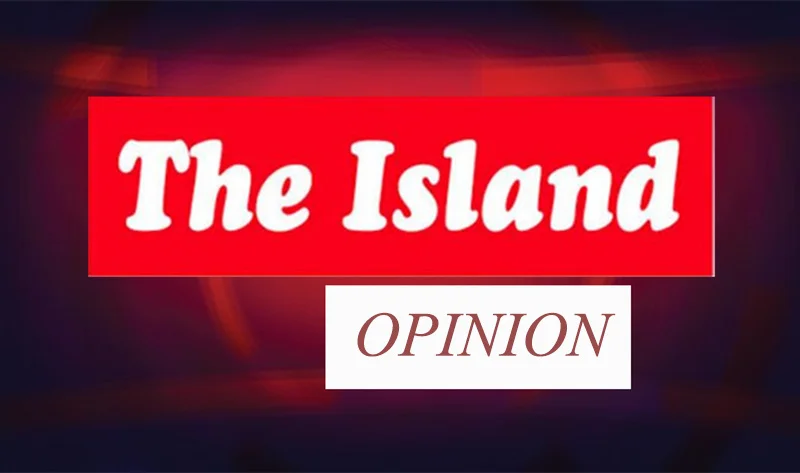
Having meticulously read and re-read the above article published in the opinion page of The Island on the 27 Nov, I hasten to make a critical review on the far-reaching proposal made by the co-authors, namely Professor Theekshana Suraweera, Chairman of the Sri Lanka Standards Institution and Dr. Prabath.C.Abeysiriwardana, Director of Ministry of Science and Technology
The aforesaid article provides a timely and compelling critique of Sri Lanka’s long-standing gaps in evidence-based policymaking and argues persuasively for the institutional adoption of Regulatory Impact Assessment (RIA). In a context where policy missteps have led to severe economic and social consequences, the article functions as an essential wake-up call—highlighting RIA not as a bureaucratic formality but as a foundational tool for smarter governance.
One of the article’s strongest contributions is its clear explanation of how regulatory processes currently function in Sri Lanka: legislation is drafted with narrow legal scrutiny focused mainly on constitutional compliance, with little or no structured assessment of economic, social, cultural, or environmental impacts. The author strengthens this argument with well-chosen examples—the sudden ban on chemical fertilizer imports and the consequences of the 1956 Official Language Act—demonstrating how untested regulation can have far-reaching negative outcomes. These cases effectively illustrate the dangers of ad hoc policymaking and underscore the need for a formal review mechanism.
The article also succeeds in demystifying RIA by outlining its core steps—problem definition, option analysis, impact assessment, stakeholder consultation, and post-implementation review. This breakdown makes it clear that RIA is not merely a Western ideal but a practical, structured, and replicable process that could greatly improve policymaking in Sri Lanka. The references to international best practices (such as the role of OIRA in the United States) lend credibility and global context, showing that RIA is not experimental but an established standard in advanced governance systems.
However, the article could have further strengthened its critique by addressing the political economy of reform: the structural incentives, institutional resistance, and political culture that have historically obstructed such tools in Sri Lanka. While the challenges of data availability, quantification, and political pressure are briefly mentioned, a deeper analysis of why evidence-based policymaking has not taken root—and how to overcome these systemic barriers—would have offered greater practical value.
Another potential enhancement would be the inclusion of local micro-level examples where smaller-scale regulations backfired due to insufficient appraisal. This would help illustrate that the problem is not limited to headline-making policy failures but affects governance at every level.
Despite these minor limitations, the article is highly effective as an advocacy piece. It makes a strong case that RIA could transform Sri Lanka’s regulatory landscape by institutionalizing foresight, transparency, and accountability. Its emphasis on aligning RIA with ongoing national initiatives—particularly the strengthening of the National Quality Infrastructure—demonstrates both pragmatism and strategic vision.
At a time, when Chairmen of statutory bodies appointed by the NPP government play a passive voice, the candid opinion expressed by the CEO of SLSI on the necessity of a Regulatory Impact Assessment is an important and insightful contribution. It highlights a critical missing link in Sri Lanka’s policy environment and provides a clear call to action. If widely circulated and taken seriously by policymakers, academics, and civil society, it could indeed become the eye-opener needed to push Sri Lanka toward more rational, responsible, and future-ready governance.
J. A. A. S. Ranasinghe,
Productivity Specialty and Management Consultant
(rathula49@gmail.com)
-
News4 days ago
Lunuwila tragedy not caused by those videoing Bell 212: SLAF
-
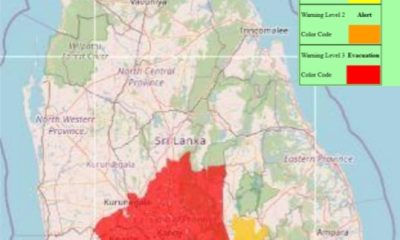
 News3 days ago
News3 days agoLevel III landslide early warning continue to be in force in the districts of Kandy, Kegalle, Kurunegala and Matale
-
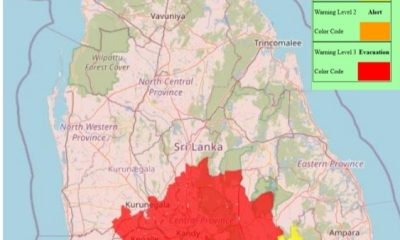
 Latest News5 days ago
Latest News5 days agoLevel III landslide early warnings issued to the districts of Badulla, Kandy, Kegalle, Kurunegala, Matale and Nuwara-Eliya
-

 Features5 days ago
Features5 days agoDitwah: An unusual cyclone
-

 Latest News6 days ago
Latest News6 days agoUpdated Payment Instructions for Disaster Relief Contributions
-

 News1 day ago
News1 day agoCPC delegation meets JVP for talks on disaster response
-

 News1 day ago
News1 day agoA 6th Year Accolade: The Eternal Opulence of My Fair Lady
-

 Latest News7 days ago
Latest News7 days agoLandslide Early Warnings issued to the Districts of Badulla, Colombo, Gampaha, Kalutara, Kandy, Kegalle, Kurunegala, Matale, Moneragala, Nuwara Eliya and Ratnapura













